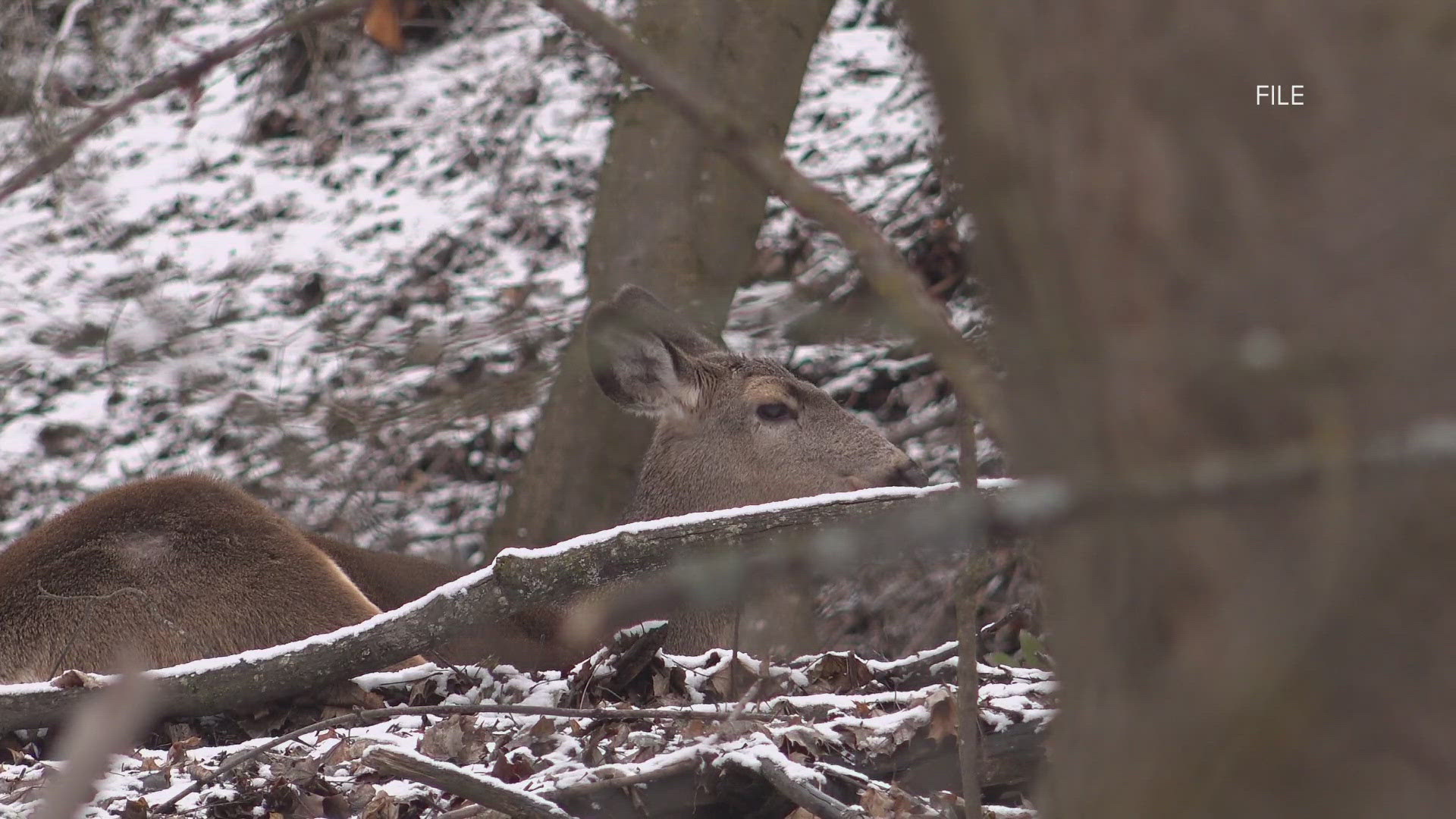SPOKANE COUNTY, Wash. — For decades, Washington's Department of Fish and Wildlife has been on the lookout for chronic wasting disease (CWD).
As of July, the disease has been detected in the state for the first time.
"Although none of us wanted this news, we're not caught by surprise," said Dr. Donny Martorello, Chief of WDFW's Wildlife Science Division.
CWD was found in a dead deer found in Fairwood in north Spokane County. The deer was discovered in February, but because the state's lab tests samples in batches of 90, it took five months for the infected sample to be flagged.
Martorello says the agency's emergency response plan immediately took effect, though WDFW is still determining what steps to take to mitigate the outbreak.
"There are items of uncertainty, right?" Martorello said. "We don't know how long it was infected, it's probably safe to assume there are other animals infected."
The disease impacts cervids, says ungulate research scientist Dr. Melia DeVivo. In Washington, that's deer, elk, moose, and reindeer.
Dr. Beth Lipton with the state's Department of Health says there are no known cases in humans.
"However it's not completely known whether people could become infected with CWD," Lipton explained, recommending that people not eat infected or possibly infected meat.
With hunting season fast approaching, the agency will be rigorously testing deer in the detection area, with much of the sampling burden on hunters and salvagers.
"We're really going to be asking for the help of Washington's communities," Martorello said.
WDFW encourages anyone who harvests a cervid to submit samples for testing, part of a surveillance program the state has used for decades to quickly identify any CWD outbreak. Martorello says as the state continues learning the extent of the spread and how to fight it, it may also come down to rule changes to require those samples.
The agency is meeting this week to determine next steps.
"The other thing we're thinking about is identifying the transportation restriction zone and reduce or minimize the movement of potentially infected animals," Martorello said.
Scientists with the department say while CWD moves from animal to animal, humans also contribute to the spread. That includes encouraging deer or other animals to feed together by leaving out food, or by transporting live or dead animals.
"We know from other states it does have population impacts," DeVivo said.
When asked if the mitigation effort could include culling, or killing off populations of deer, Martorello said while it's in the emergency plan as an option, it hasn't been identified yet as the method they'll take.
"It's not off the table," Martorello said.

